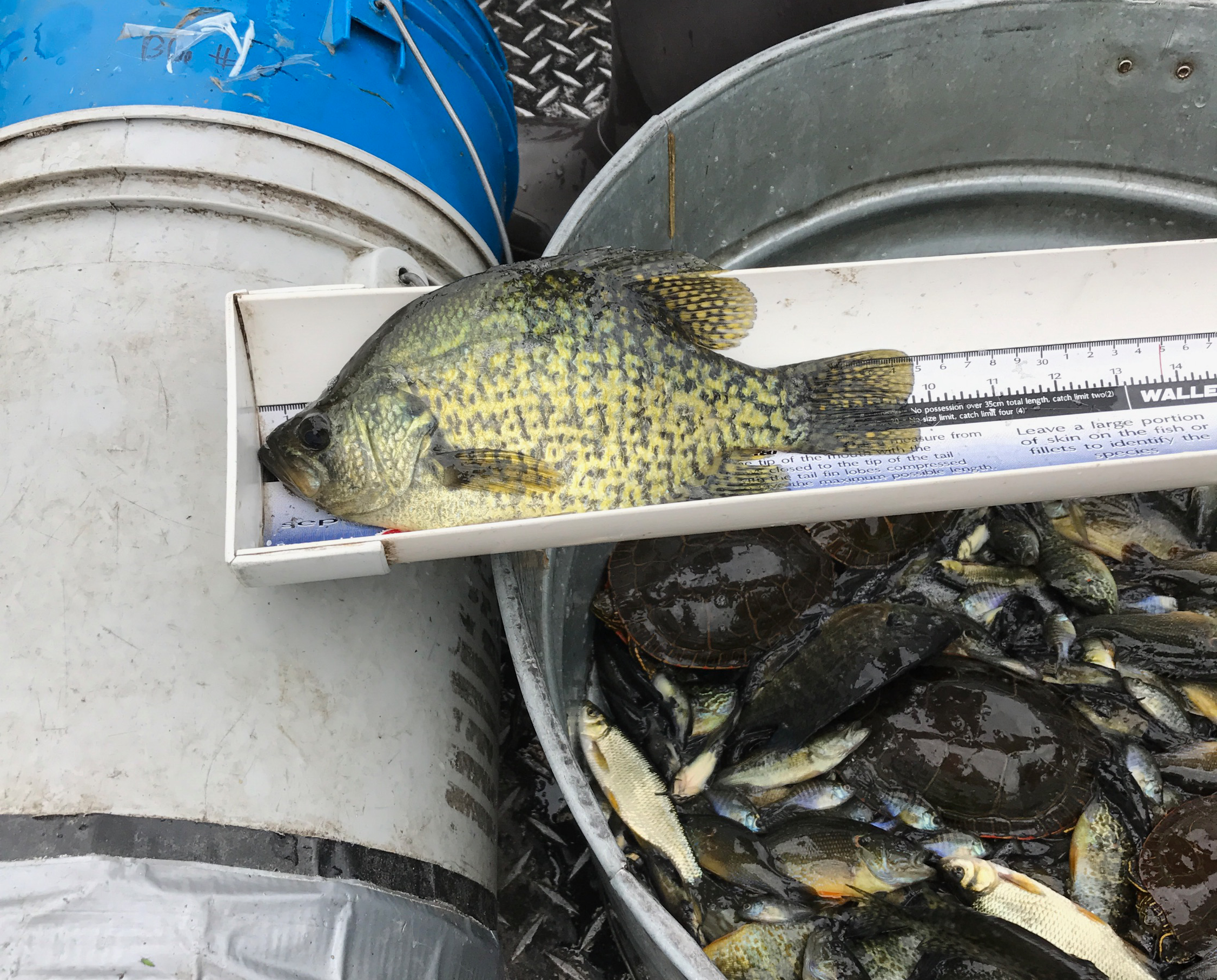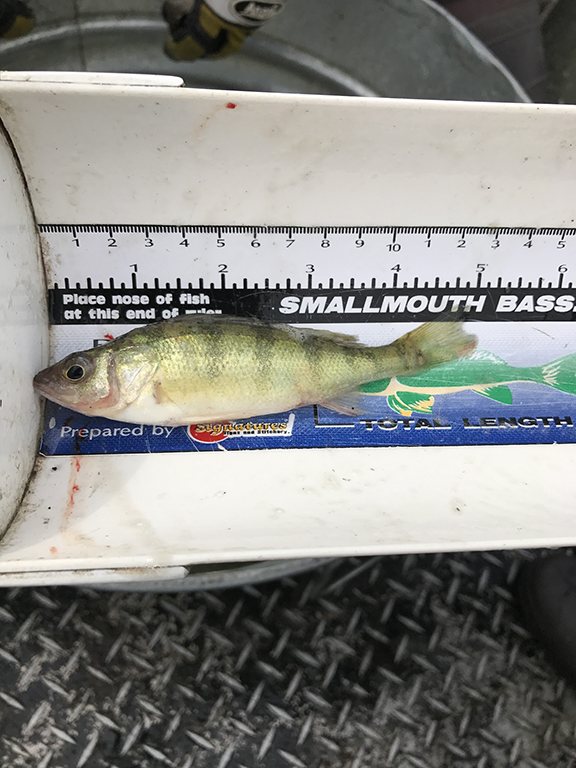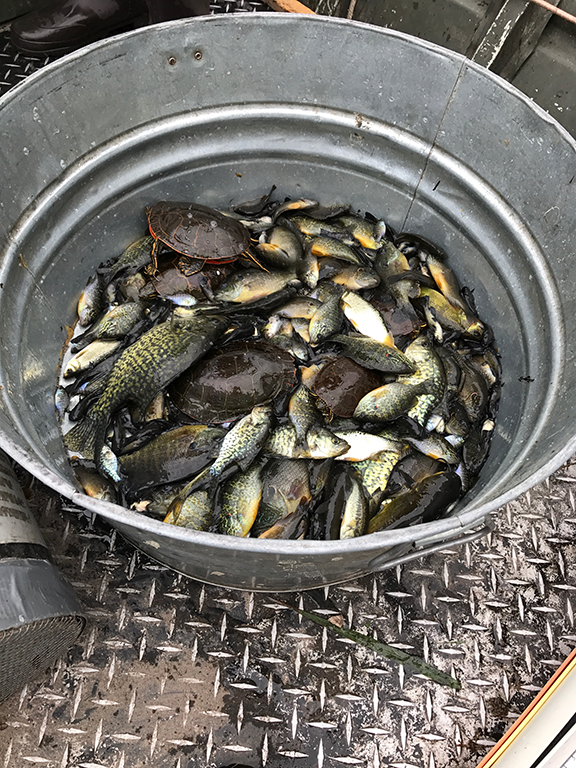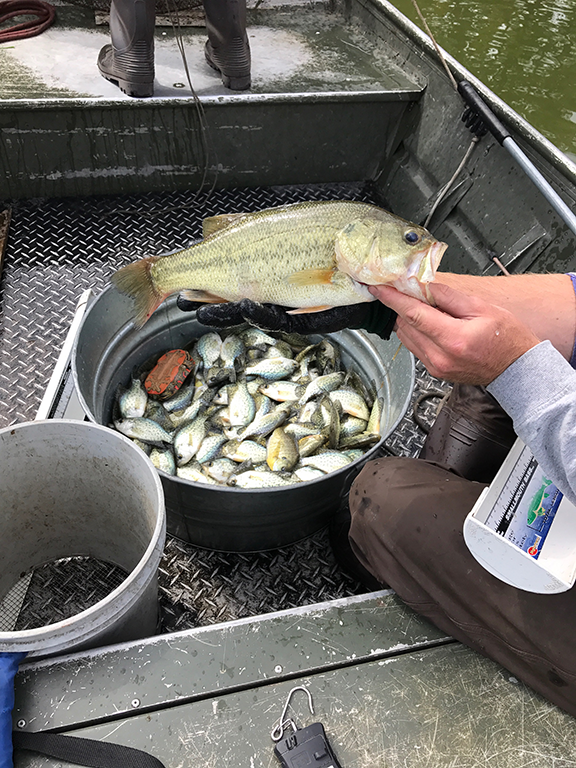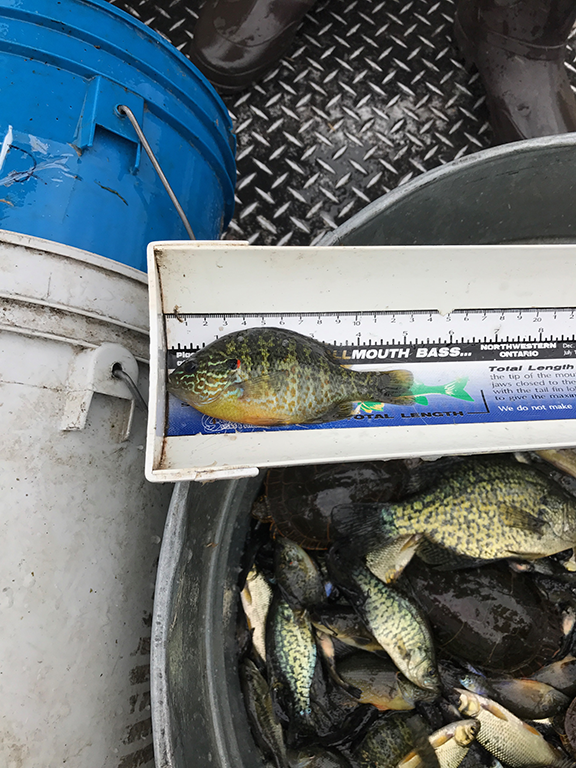Goose & Wilkinson Fish Surveys
During the week of September 4th, VLAWMO worked with Blue Water Science to survey the fish populations in Goose and Wilkinson Lakes. These were the lakes for the survey because they're the lakes that start off our 10-year plan. Because Goose and Wilkinson are more peripheral on the outskirts of the watershed, as well as being impaired waterbodies, improvements on them will also impact water bodies downstream for the better. As for the fish surveys, VLAWMO is looking to ask questions about what's living in the lakes, how many, and what sizes are they? All of this information will provide a better look at the lake ecosystem, from vegetation to hints in how nutrients may or may not be overpowering aquatic life. It will also allow us to compare to past studies in Goose Lake. The best case scenario would be a diverse fish population with a wide range of sizes, indicating a healthy aquatic community. A generational spread of fish helps ensure a long-term, resilient fish population.
Four nets were set on Wilkinson and East Goose, with 2 more on West Goose. The nets were set overnight and checked after a 24-hour period. All fish and turtles were safely returned to the lake.
Initial results show that:
- The 2012 bullhead removal in Goose Lake worked! Bullhead numbers are way down this time around. Bullhead, like carp, are considered 'rough fish' which feed vigorously from the bottom, constantly stirring up nutrients into the water column. Because a balance of rough fish with game fish helps support a cleaner lake, this is a good sign.
- High water levels may be allowing more bullhead to transfer from Black and Amelia Lakes into Wilkinson.
- No carp were found in the nets. This implies that the fish barrier at Wilkinson is working as intended, to prevent carp from moving further upstream from Pleasant and Deep Lakes.
- Largemouth bass, crappie, bluegill, bullhead, perch, and mudminnows were discovered.
In addition to fish populations, sediment, shoreline erosion, and stormwater runoff also influence the lakes. Every lake is also a mystery, with no "quick fix" or guaranteed recipe for success. Careful analysis of drainage, nutrient flows, water quality monitoring, fish populations, and lake history will gradually reveal a plan of action. But residents can help, too! Your nearest ditch or stormdrain is part of the equation -- check out our service projects to help keep streets and stormdrains clean and how to help.
Stay tuned for a full data report this Fall.










